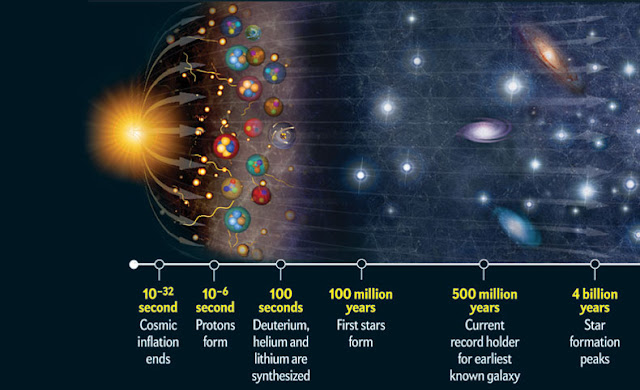Many scientists nowadays strongly believe that everything else in this universe, including our earth, moon, sun, stars, planets, stars, has been created from zero at once. Not just the idea that they believe it. He is also trying to prove this on the basis of various research and data.
The Big Bang Theory (BBT)
Albert Einstein, of course, thought that the universe was not created suddenly. The universe is infinite and eternal. It is as it is, and it will be so in the future. According to this doctrine called the Static Universe Model, the universe was said to have no beginning or end. Although this idea was widely prevalent all over the world at first, many scientists and researchers were able to prove that the universe is not stable or stable with the help of their tireless work, experimentation, and mathematical analysis. As it begins, so does the end. It is constantly expanding, changing, and moving at a certain speed. And it was created by an instantaneous eruption from zero, known in the language of scientists as the Big Bang.
Abel discovers that as the universe expands, there is a cosmic red cell or red abstract. The red layers of distant galaxies, quasars, and interstellar gas clouds increase as their distance from the earth. As these constellations are gradually moving away from each other, it can be assumed that at one time they were very close and the universe was very small. And from this point of view, it is possible to explain the Big Bang or the Big Bang theory from the modern worldview.
The Doppler Effect is called the occurrence of a waveform's frequency-changing due to the relative motion between the source and the observer. According to Doppler's doctrine, if a constellation of light radiates continuously toward us, then its radiation wavelength decreases at a relative rate, and its light appears blue because of the relatively small wavelength. Likewise, if a star radiating light is constantly moving away from us, the wavelength of its radiation increases at a relative rate, and due to the relatively large wavelength, its light shows red.
In 1208, the US astronomer Edwin Hubble observed that the galaxies in space were gradually moving away from us in proportion to their distance. His observation supports the expansion of the universe. As the galaxies were moving away from one another, he assumed they were centered at a point at the beginning of creation. And then the universe was solid and compressed. According to Hubble, there are about 100 billion galaxies outside our constellation, like the galaxy in our constellation with about ten billion stars. The electromagnetic radiation (visible light) emitted from these distant galaxies is called red light or red-shifted.
According to scientists, at some point in the past, our universe is expanding. Physicists have calculated that this expansion began about 1,550 billion years ago. According to them, less than one-hundredth of a second of the universe was created in less than a quarter of a second, and then its size increased to billions of times (1 to 8 zero). In the beginning, it was like a small pitcher and it was very thick and very hot. But physicists have not been able to explain precisely how this motor is suddenly created. According to them, everything in the universe was created after the Big Bang, and before that nothing existed. Scientists have called this condition 'singularity' before the Big Bang. And this 'singularity' is a special field where there are no rules of general physics and it defies our ability to understand. The existence of the cingulate is imagined at the heart of the black hole.
From the 5th to the 5th, scientists believed that everything in the universe remained unchanged. Nothing like the Big Bang has ever happened. The universe is still there as it was in the beginning, and it will be so in the future. And even though they did not accept the expansion of the universe, they explained it by the death of the old galaxy and the replacement of the new galaxy there. Later, with a group of astronomers at the University of Cambridge, Martin Ryle studied the strong radio waves that came from outer galaxies and found that about a thousand times the radiation emitted from galaxies outside the constellations came to our planet this year. In terms of numbers, the number of distant galaxies is much higher than our nearest galaxy. And these distant galaxies are constantly changing.


No comments:
Post a Comment